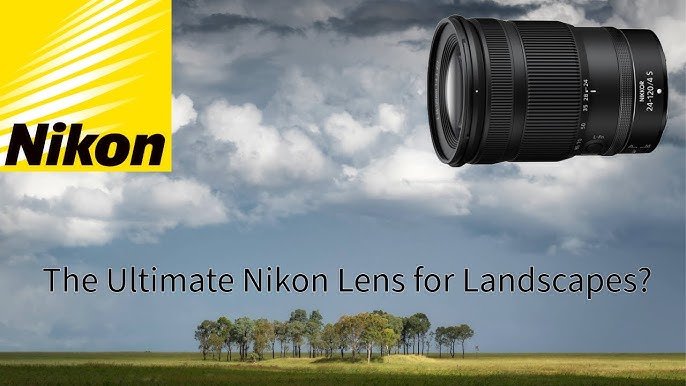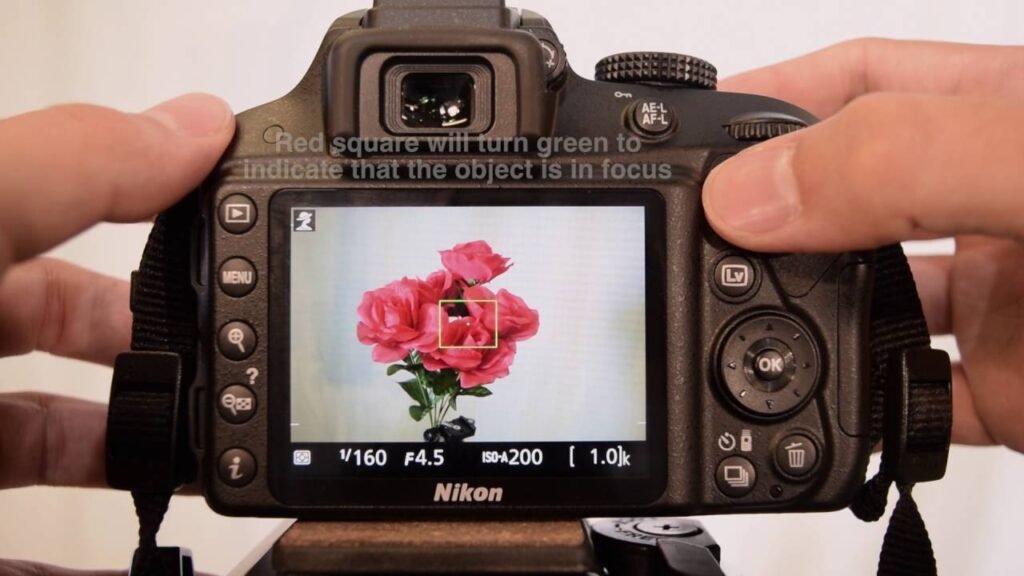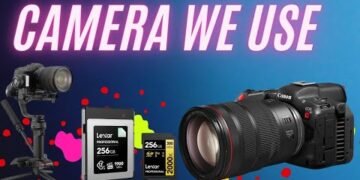When it comes to choosing a camera, two names often dominate the conversation: Canon and Nikon. Both of these brands are giants in the world of photography, offering a wide range of cameras that cater to different needs. But which one is better? The answer depends on what you’re looking for in a camera. In this article, we will compare Canon and Nikon based on their key features, camera models, lenses, performance, and more.
History and Reputation
Canon and Nikon have been in the camera business for many decades. Canon was founded in 1937 in Japan, while Nikon’s roots go back to 1917. Over the years, both companies have built strong reputations for making high-quality cameras.
Canon is often known for its user-friendly design and cutting-edge technology. Nikon, on the other hand, is praised for its excellent image quality and strong build. Both brands have a loyal following and are trusted by professional photographers all over the world.
Camera Models
Both Canon and Nikon offer a variety of camera models, including entry-level DSLRs, mid-range cameras, and professional models. Let’s take a closer look at the key options available from both brands.
Canon: Canon’s DSLR lineup includes the Rebel series for beginners, the EOS series for enthusiasts, and the EOS-1D X series for professionals. Canon also produces mirrorless cameras like the EOS R series.
- Canon EOS Rebel Series: These are great for beginners. They offer good image quality and simple controls. Popular models include the Rebel T7 and T8i.
- Canon EOS R Series: These are Canon’s mirrorless cameras. The EOS R5 and R6 are popular among professionals due to their excellent video and photo quality.
- Canon EOS 1D X Mark III: This is a high-end DSLR used by professionals, particularly for sports and wildlife photography.
Nikon: Nikon offers a similar range, from beginner to professional cameras. Nikon’s DSLR lineup includes the D3000 and D5000 series for beginners and the D850 and D6 for professionals. Nikon also has mirrorless cameras like the Z series.
- Nikon D3500: A beginner DSLR camera that is easy to use. It has good battery life and solid image quality.
- Nikon Z Series: These mirrorless cameras, like the Z6 and Z7, are known for their great image quality and faster performance.
- Nikon D6: Nikon’s top-tier DSLR, designed for professionals who need speed and precision, particularly in sports and action photography.
Image Quality
Both Canon and Nikon cameras are known for producing excellent image quality. However, there are some differences that may influence your decision.
Canon: Canon cameras often have vibrant and warm colors, which many photographers appreciate for portraits and lifestyle shots. Canon’s CMOS sensors are excellent at capturing detailed images, especially in low-light situations. In terms of dynamic range (the ability to capture both highlights and shadows), Canon’s higher-end cameras perform very well, although some users feel that Nikon has an edge in this area.
Nikon: Nikon cameras are often praised for their sharpness and clarity. Nikon’s sensors generally provide more natural colors, especially in landscape photography. Nikon cameras also tend to offer better performance when it comes to dynamic range. This is particularly noticeable in high-contrast scenes, where Nikon cameras can capture more detail in both the dark and light areas of an image.
Lens Selection
One of the most important aspects of choosing a camera system is the availability of lenses. Both Canon and Nikon have a broad selection of lenses, but there are some differences in lens ecosystems.

Canon: Canon has a larger selection of lenses, especially for their DSLR cameras. The EF and EF-S lens series cover a wide range of focal lengths and types, from wide-angle to telephoto lenses. Canon’s RF lenses for mirrorless cameras are also becoming increasingly popular, though they are still limited compared to the EF lens lineup.
For those who want high-quality lenses at a more affordable price, Canon’s third-party lens options from brands like Sigma and Tamron are also available. However, Canon lenses tend to be more expensive, especially when it comes to prime lenses and wide-aperture zoom lenses.

Nikon: Nikon also offers a broad selection of lenses, but their lens ecosystem is slightly less extensive than Canon’s. Nikon’s F-mount lenses are compatible with most Nikon DSLRs, and the new Z-mount lenses are designed for their mirrorless cameras. Nikon’s Z-mount lenses are known for their sharpness and performance, but they are still catching up in terms of variety compared to Canon’s RF lens lineup.
Nikon also benefits from high-quality third-party lenses from Sigma, Tamron, and others. Nikon’s lenses are generally considered to be of high optical quality, and many photographers appreciate the build and sharpness of Nikon lenses.
Autofocus Performance
Autofocus is one of the most critical factors when choosing a camera, especially for action and sports photographers. Both Canon and Nikon have made huge advancements in autofocus technology in recent years.
Canon: Canon is known for having fast and reliable autofocus systems. Canon’s Dual Pixel autofocus technology, available in many of their newer DSLR and mirrorless cameras, provides smooth and accurate focusing during both stills and video. The EOS R5 and R6, for example, offer excellent autofocus performance even in low light. Canon’s tracking of moving subjects is also among the best in the industry.
Nikon: Nikon’s autofocus systems are also highly capable. Nikon’s DSLRs, such as the D850, feature phase-detection autofocus, which makes them very fast for still photography. The Z series mirrorless cameras also benefit from excellent autofocus technology, with the Nikon Z9 being a standout model for action and wildlife photography. Nikon’s eye-tracking autofocus is particularly impressive for portrait photography.
Video Capabilities
If you’re a videographer or interested in recording videos, the choice between Canon and Nikon becomes even more important. Both brands offer cameras with strong video features, but there are some key differences.

Canon: Canon has long been the preferred choice for videographers. Their cameras, especially the EOS R series and the EOS 5D Mark IV, offer excellent video quality. Canon’s Dual Pixel autofocus system ensures smooth and accurate focusing while recording video, which is a major advantage for solo shooters. Canon’s color science is also popular among filmmakers, as it delivers warm and natural tones.

Nikon: Nikon has improved its video capabilities in recent years, especially with the Z series. The Z6 and Z7 offer 4K video recording, and the Z9 goes even further with 8K video. Nikon’s autofocus during video recording has improved but is still not as smooth as Canon’s. However, many videographers find Nikon’s color science to be accurate and pleasing for their needs.
Battery Life
Battery life is an important consideration, especially for those who plan to shoot long events, like weddings or sports.
Canon: Canon cameras, especially DSLRs, are known for having good battery life. Many Canon DSLRs can shoot hundreds or even thousands of photos on a single charge. Mirrorless cameras like the EOS R5 and R6, however, have shorter battery life compared to DSLRs, as is common with most mirrorless models.
Nikon: Nikon’s DSLRs also offer great battery life. The Nikon D850, for example, can shoot up to 1,800 shots on a single charge. The mirrorless Z-series cameras have shorter battery life, but they perform better than some other mirrorless models. Nikon’s new Z9 offers excellent battery performance for a mirrorless camera.
Price and Value for Money
The cost of a Canon or Nikon camera can vary widely depending on the model. In general, Canon cameras tend to be a bit more expensive than Nikon cameras, especially at the professional level. However, both brands offer cameras at every price point, from budget-friendly entry-level models to high-end professional models.
Canon: Canon’s beginner and mid-range models, like the Rebel series and EOS 90D, are often priced slightly higher than similar Nikon models. However, Canon’s lenses and accessories also tend to be priced on the higher side.
Nikon: Nikon offers excellent value for money, particularly for their mid-range and professional cameras. The Nikon D7500, for example, offers great performance at a reasonable price. Nikon’s lenses are often a bit cheaper than Canon’s, especially for higher-end lenses.
Conclusion: Canon or Nikon?
Both Canon and Nikon produce excellent cameras, and the decision between the two ultimately depends on your personal preferences and needs. If you value user-friendly designs, great autofocus systems, and superb video quality, Canon might be the better choice for you. On the other hand, if you prioritize image sharpness, dynamic range, and a strong build, Nikon could be the way to go.
In the end, both brands have a lot to offer, and you won’t go wrong with either one. It’s all about finding the camera that suits your style of photography and fits within your budget. Happy shooting!














Discussion about this post